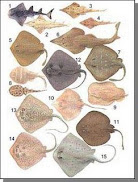
Ingredients
1 1/2 pounds boiling or yellow-fleshed potatoes,
cut into wedges
1/4 cup plus 3 tablespoons extra-virgin olive oil
(EVOO), plus more for drizzling
6 cloves garlic, smashed and peeled
2 tablespoons finely chopped fresh rosemary leaves
Salt and pepper
1/2 cup cornmeal
1/4 cup flour
1/4 cup grated Parmigiano-Reggiano cheese
Juice and grated peel of 1 lemon
Four 6- to 8-ounce red snapper fillets
4 plum tomatoes, seeded and chopped
1/3 cup chopped flat-leaf parsley (a generous handful)
4 scallions, finely chopped
Directions
1. Preheat the oven to 500°. Place the potatoes on a baking sheet and toss with 3 tablespoons EVOO, the garlic, the rosemary and salt and pepper to taste. Roast until the potatoes are tender and golden at the edges, 20 to 25 minutes.
2. While the potatoes are working, in a large skillet, heat the remaining 1/4 cup EVOO, 4 turns of the pan, over medium-high heat. Combine the cornmeal, flour, cheese and lemon peel on a plate. Season the snapper with salt and pepper, then coat evenly with the cornmeal mixture. Fry in the skillet, turning once, until golden brown, about 7 minutes total.
3. In a medium bowl, toss together the tomatoes, parsley, scallions, lemon juice and a drizzle of EVOO; season with salt and pepper.
4. Top the fish with the sauce and serve the potatoes alongside.
1 1/2 pounds boiling or yellow-fleshed potatoes,
cut into wedges
1/4 cup plus 3 tablespoons extra-virgin olive oil
(EVOO), plus more for drizzling
6 cloves garlic, smashed and peeled
2 tablespoons finely chopped fresh rosemary leaves
Salt and pepper
1/2 cup cornmeal
1/4 cup flour
1/4 cup grated Parmigiano-Reggiano cheese
Juice and grated peel of 1 lemon
Four 6- to 8-ounce red snapper fillets
4 plum tomatoes, seeded and chopped
1/3 cup chopped flat-leaf parsley (a generous handful)
4 scallions, finely chopped
Directions
1. Preheat the oven to 500°. Place the potatoes on a baking sheet and toss with 3 tablespoons EVOO, the garlic, the rosemary and salt and pepper to taste. Roast until the potatoes are tender and golden at the edges, 20 to 25 minutes.
2. While the potatoes are working, in a large skillet, heat the remaining 1/4 cup EVOO, 4 turns of the pan, over medium-high heat. Combine the cornmeal, flour, cheese and lemon peel on a plate. Season the snapper with salt and pepper, then coat evenly with the cornmeal mixture. Fry in the skillet, turning once, until golden brown, about 7 minutes total.
3. In a medium bowl, toss together the tomatoes, parsley, scallions, lemon juice and a drizzle of EVOO; season with salt and pepper.
4. Top the fish with the sauce and serve the potatoes alongside.























































